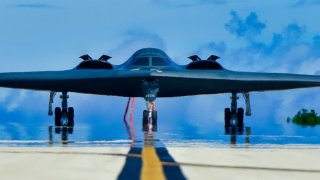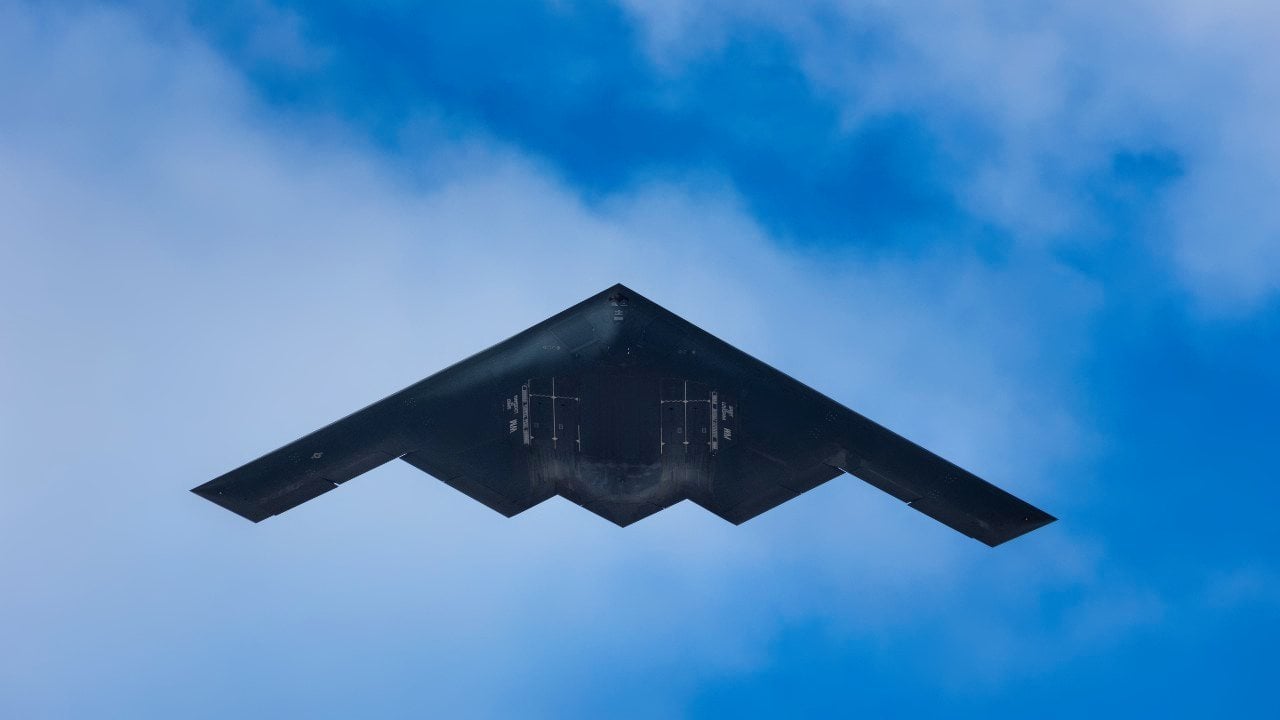Brent M. Eastwood

China’s JH-XX stealth bomber program is aspirational. It is not yet a real plane.
But the People’s Liberation Army Air Force, or PLAAF, seems to have big plans for the system. The PLAAF hopes to develop an aircraft that can dominate the region; defend territorial claims in the South and East China Seas; teach Taiwan a lesson; and threaten U.S. military bases in Japan or Guam.
JH-XX is actually just a code name. As said, the aircraft does not exist yet. But Western intelligence reports give us an idea about what the PLAAF wants from its new bomber program. Meanwhile, China likely has strategic and tactical objectives that include having a regional stealth bomber in its fleet by 2025.
What Do We Know About the JH-XX?
Since 2018, the Defense Intelligence Agency has tracked the development of the new bomber. An American military power report in 2019 also noted the existence of the PLAAF bomber program. The DIA has said that China is pursuing capabilities including stealth characteristics to help better patrol the Indo-Pacific region.
Intelligence on the bomber indicates the JH-XX program will not yield an airplane until at least 2025. According to American findings, the plane could borrow concepts from U.S. fighters such as the F-22 or F-35. It would fire long-range stand-off missiles and deliver precision-guided munitions.
The JH-XX could also be a stealth fighter-bomber that develops technology from the J-20 Mighty Dragon tactical warplane. This would make the JH-XX a regional aircraft rather than strategic, emphasizing a PLAAF focus on speed and maneuverability rather than long range.
Lording It Over Taiwan
A stealth fighter-bomber could put Taiwan in its sights. Taiwan is China’s biggest military and political challenge, and it has influenced the PLAAF to pursue the development of bombers that can penetrate contested air space. In fact, China often flies warplanes into Taiwan’s air defense identification zone. The RAND Corporation documents these incursions, which happen on a weekly and even daily basis.
According to a RAND report on China and Taiwan, “From 2020 to 2021, Chinese sorties more than doubled to 950 last year at the stunning average of 2.6 flights per day. During the first four days of October, Beijing sent nearly 150 flights against Taiwan, 56 of them on Oct. 4, the current single-day record.”
The flights that threaten Taiwan include conventional strategic bombers such as the H-6. The PLAAF wants to simulate combat as much as possible to give their pilots experience in at least notional aerial warfare. Taiwan ground defenses can track non-stealth bombers such as the H-6, but they would have trouble spotting a radar-evading fighter-bomber escorted by stealth fighters.
An Array of Regional Goals for the JH-XX
Further harassing Taiwan is not the only goal of the JH-XX stealth fighter-bomber project. China has the tactical goal of going up against U.S. Navy carrier battle groups and evading the vaunted American Aegis anti-aircraft and anti-missile system.
The U.S. Marine Corps will back American allies in accordance with its new Force Design 2030 plan. This gives the Marines more amphibious warfare capabilities to challenge the PLAAF’s designs on the East and South China Seas. China is aware of this plan; it is public knowledge. Stand-off missiles fired from the JH-XX fighter-bomber would give the Marines headaches.
The PLAAF must also defend its contested territorial claims and support its militarization of islands, rocks, and reefs in the East and South China Seas. A stealth fighter-bomber could seal a protective radius around the disputed islands and give countries such as Vietnam and the Philippines pause if they ever want to challenge China’s territorial claims militarily.

As we can see, China has strategic and tactical reasons to bring a fighter-bomber into existence. The PLAAF is looking at the JH-XX program to craft a fighter-bomber that could bring the fight to the U.S. Navy and Marine Corps, flex China’s muscles against Taiwan, and protect Beijing’s territorial claims. Research and development for the JH-XX can change depending on PLAAF needs, and that makes the platform an example of China applying strategic demands to its military-industrial base – a practice it has borrowed from the United States.
No comments:
Post a Comment